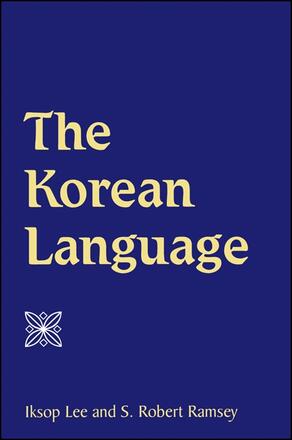
The Korean Language
Alternative formats available from:
An accessible, comprehensive source of information on the Korean language--its structure and history to its cultural and sociological setting.
Description
This book describes the structure and history of the Korean language, ranging from its cultural and sociological setting, writing system, and modern dialects, to how Koreans themselves view their language and its role in society. An accessible, comprehensive source of information on the Korean language, Lee and Ramsey's work is an important resource for all those interested in Korean history and culture, offering information not readily available elsewhere in the English-language literature.
Iksop Lee is Professor of Korean Language and Linguistics at Seoul National University and former Director of the Korean National Language Research Center. He has written numerous books on Korean linguistics, including Kugoáhak kaesoál (An Introduction to Korean Linguistics) and Kugoá p'yogipoáp yoán'gu (A Study on Korean Orthography). S. Robert Ramsey is Professor of East Asian Linguistics at the University of Maryland. His books include Accent and Morphology in Korean Dialects and The Languages of China.
Reviews
"This is an important topic. Not only is an understanding of all the intricacies of the Korean language important to an accurate understanding of Korean culture, knowledge of the Korean language is also important to linguists who otherwise might not be interested in East Asian cultures because Korean, both in its written and spoken forms, has several unique features which this book identifies, describes, and explains. I particularly like the fact that the data is presented in the Korean alphabet as well as in romanization. Comprehensible and comprehensive, this is the best book in English on this subject. " — Don Baker, University of British Columbia